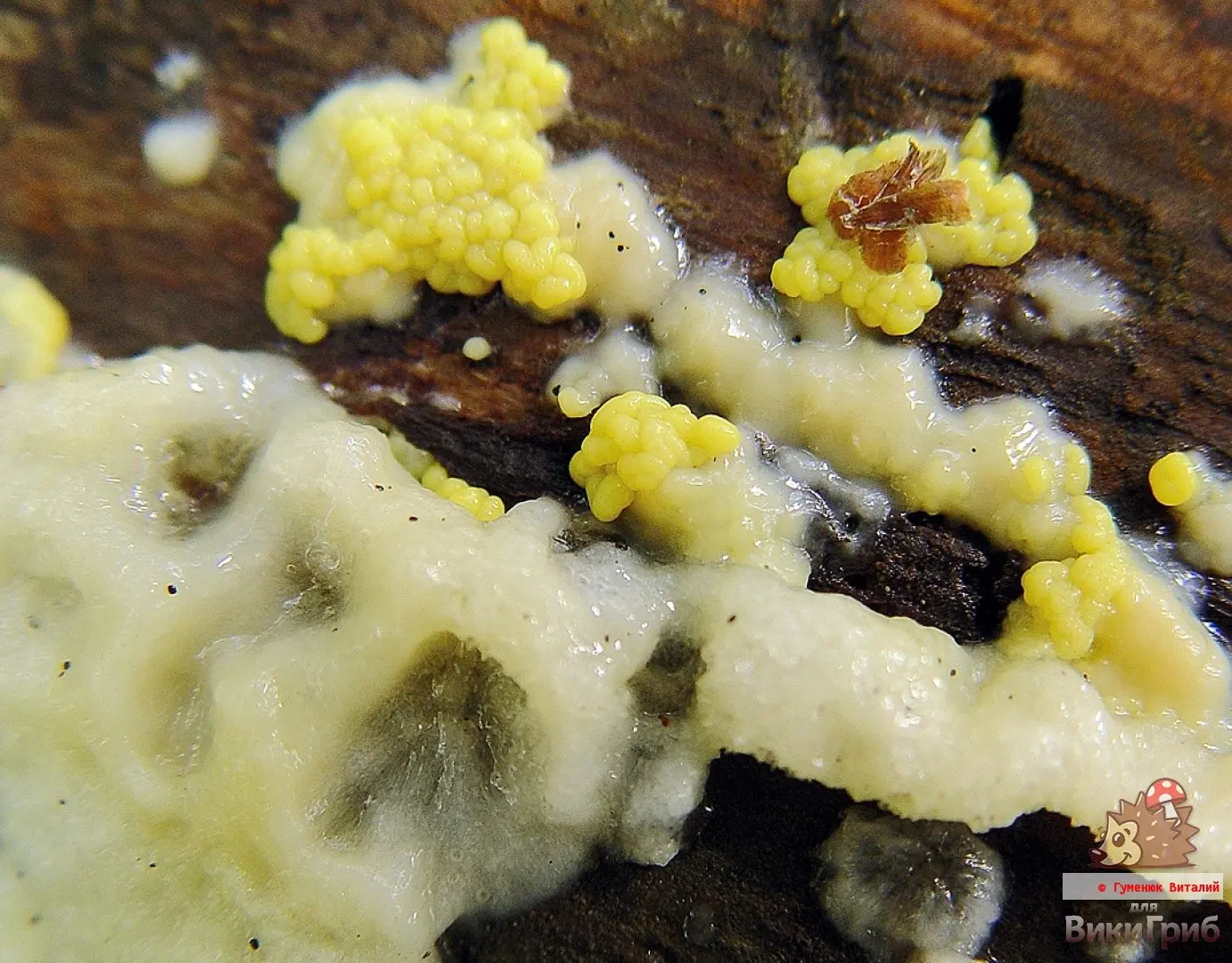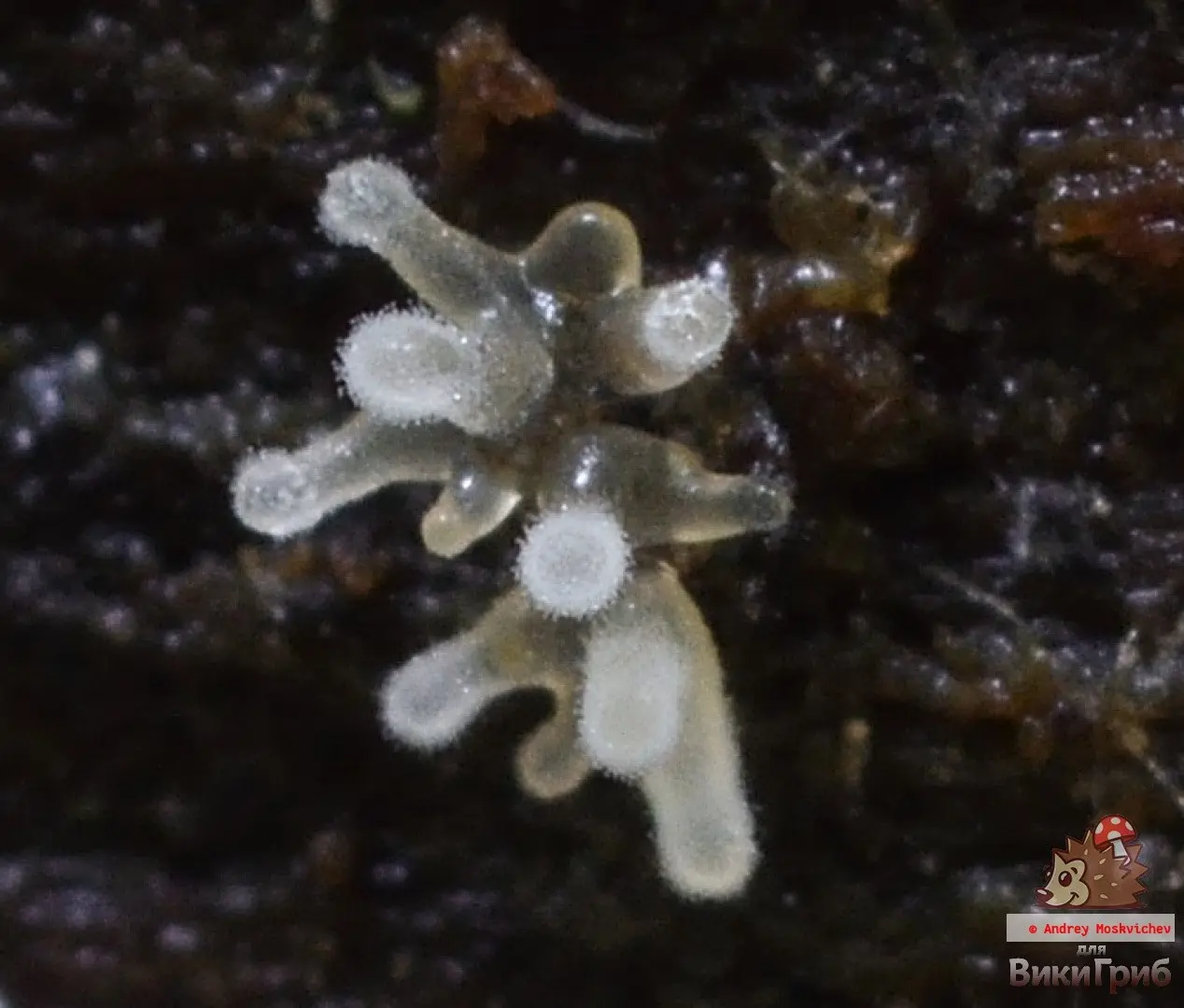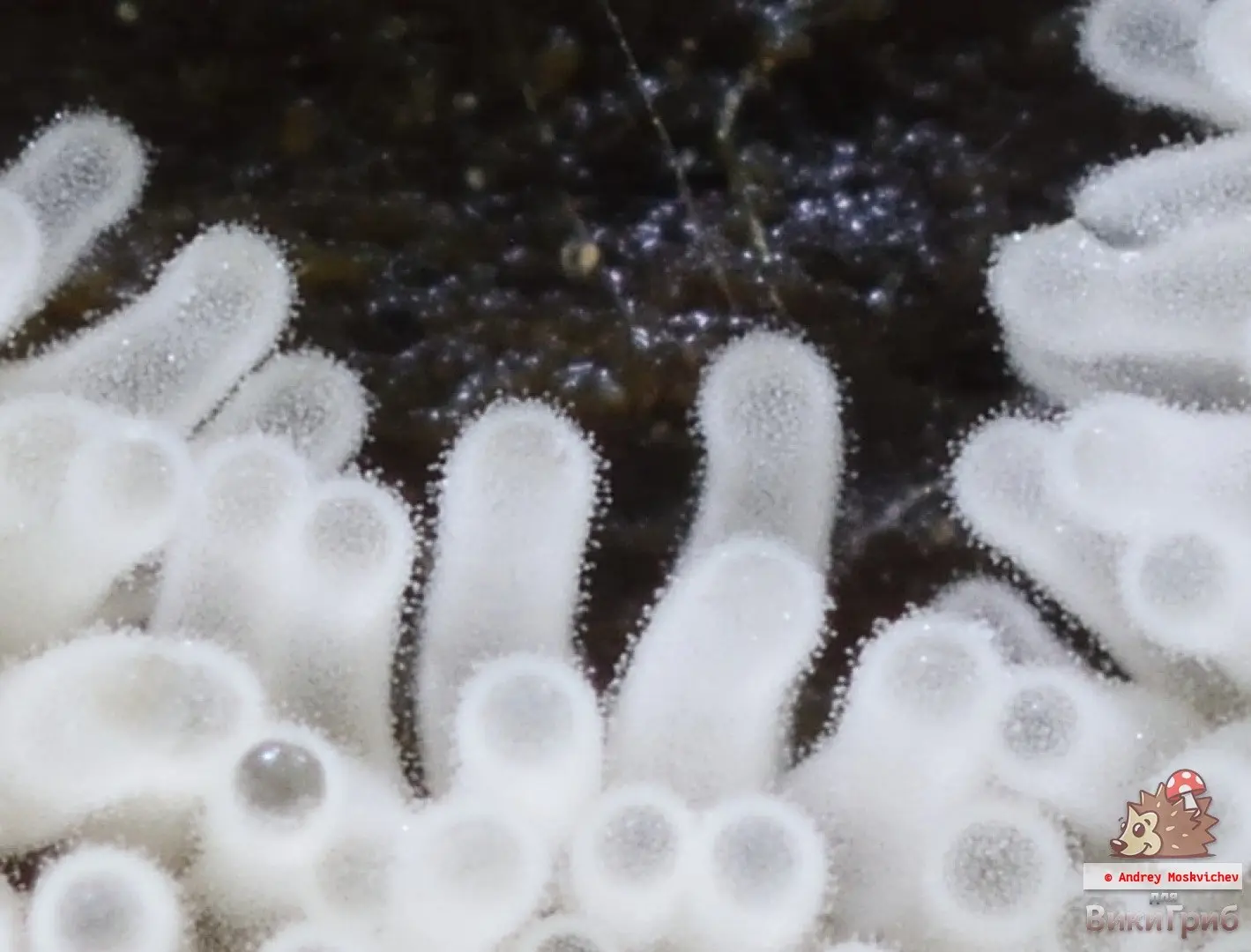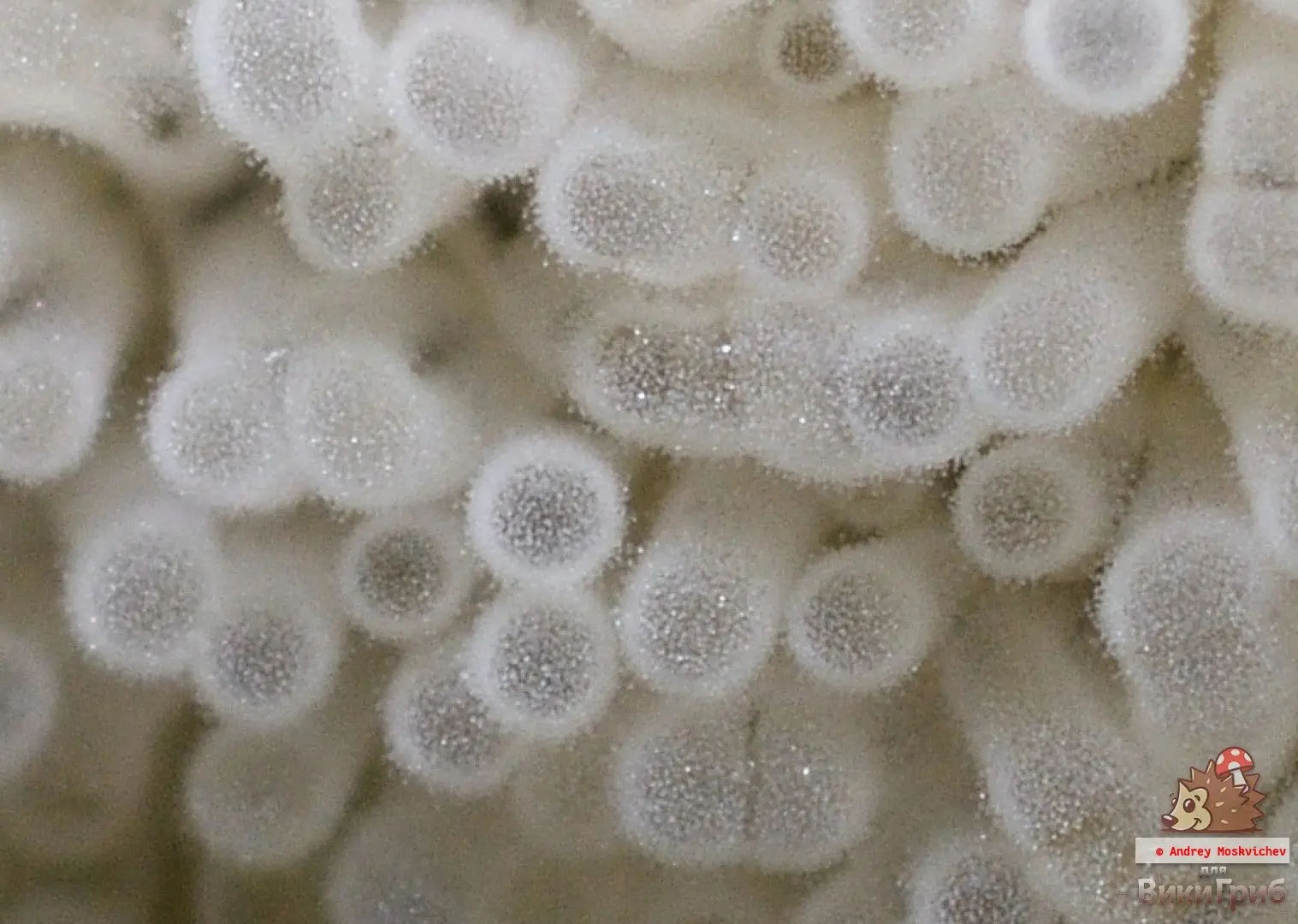Ceratiomyxa fruticulosa
:
- Keratiomixa dwarf shrub
- Keratomixa dwarf shrub
- Byssus bushy

Unlike other myxomycetes, Ceratiomyxa dwarf shrub at the ripening stage consists of a series of vertical, simple or branched miniature columns, in the total mass taking the form of a porous, smooth or convex crust. White, but sometimes pinkish or pale yellow, yellowish greenish. It grows on average about 4 millimeters in height and forms extensive clusters on the surface of the substrate, covering an area from a few square centimeters to meters.
From a distance, to the naked eye, it looks like some kind of airy whitish glaze or a thin layer of foam. In order to see the beauty of ceratiomixa, you need a magnifying glass or microphotography.
Plasmodium white or yellowish.

Sporocarps (fruiting bodies used to form spores) are very small. Height approximately 1-6 (rarely up to 10) mm, thickness 0,1-0,3, sometimes up to 0,5-1 mm. As a rule, white, transparent whitish, but can also be in other colors, in yellowish, pinkish, yellowish-greenish or bluish tones. They look like tiny icicles.
The sporocarps in Ceratiomyxa are subshrub-columnar or coral-shaped, forming simple or complex structures, sometimes branching near the base into several (up to 5) separate processes.

Individual sporocarps usually form more or less dense groups in which tens and hundreds of individual “columns” can be counted. This group has a soft, elastic texture.
Споры are formed on the outer surface of sporocarps, therefore, in the photo, individual “branches” may have a slightly “blurred”, fuzzy appearance.


Colorless or pale greenish. The spore size is 7-20 x 1,5-3 µm.
Cosmopolitan. Ceratiomyxa dwarf shrub is common in the tropics, and in the temperate zone, and in the Arctic.
It grows in the warm season, in summer and autumn, for the northern hemisphere, the terms are given: June-October, but adjustments made by weather conditions should be taken into account.
Ceratiomyxa dwarf shrub grows on the surface of deciduous and coniferous trees and on mosses. It prefers dead wood, but can also grow on the bark of living trees. This myxomycete does not parasitize hosts and does not penetrate deep into the organisms on which it grows. Plasmodium slowly moves along the surface of the substrate, absorbing particles of organic matter, bacteria and fungi.
Has not been studied. Obviously, there were no volunteers: the fruiting bodies are too small. There are no data on toxicity.
Other ceratiomixes. Other slime molds, of which there are a great many in nature, and not all of them are well described.
Subspecies of Ceratiomyxa fruticulosa:
- Ceratiomyxa fruticulosa f. orange
- Ceratiomyxa fruticulosa f. golden
- Ceratiomyxa fruticulosa f. yellow
- Ceratiomyxa fruticulosa f. fruity
- Ceratiomyxa fruticulosa f. rosy
- Ceratiomyxa fruticulasa var. shrubs
- Ceratiomyxa fruticulasa var. killing
- Ceratiomyxa fruticulasa var. hair loss
- Ceratiomyxa fruticulasa var. descending
- Ceratiomyxa fruticulosa var. flexuous
- Ceratiomyxa fruticulosa var. fruitful
- Ceratiomyxa fruticulosa var. porioides
- Ceratiomyxa fruticulosa var. rosella
Photo: Vitaly Humenyuk, Alexander Kozlovskikh, Andrey Moskvychev.









